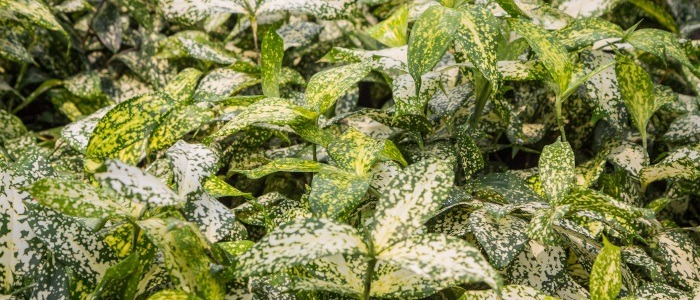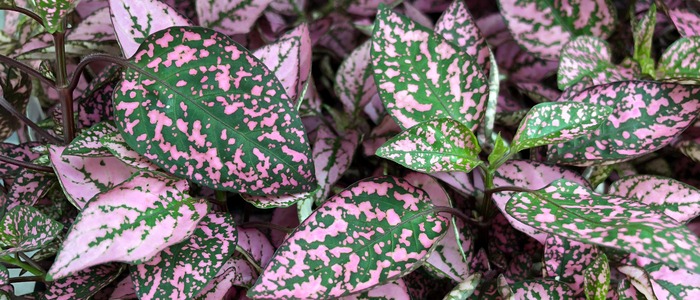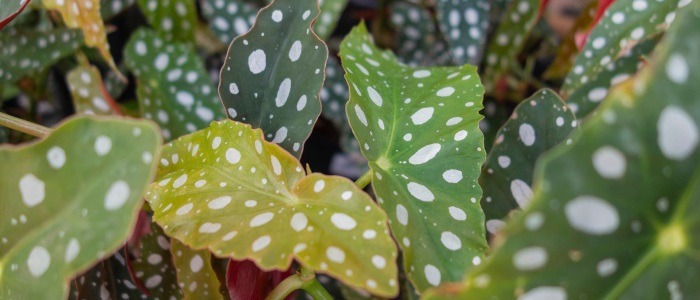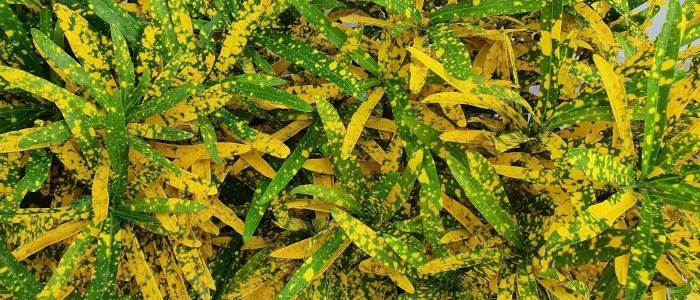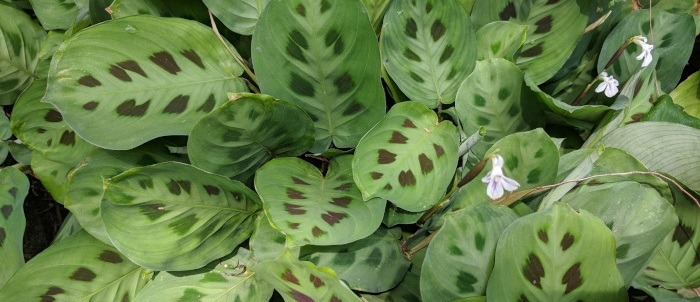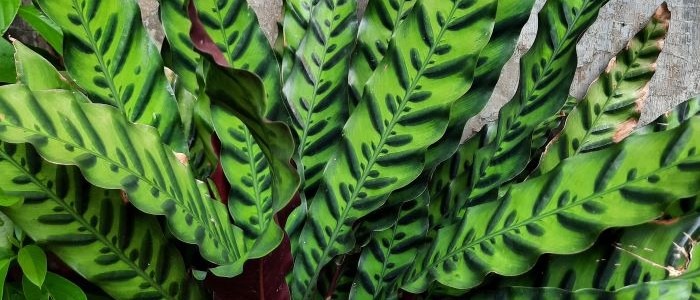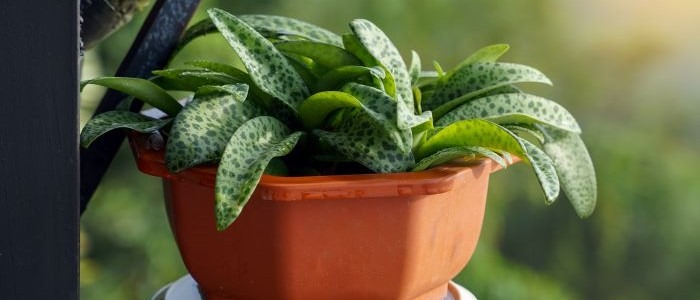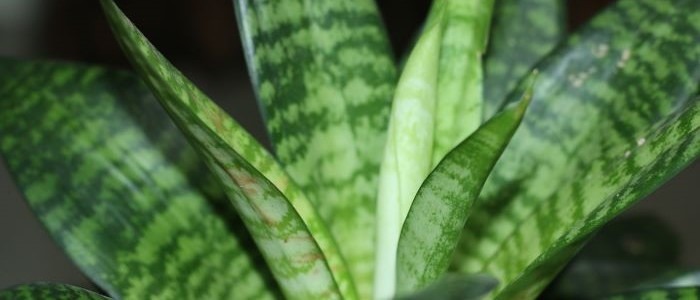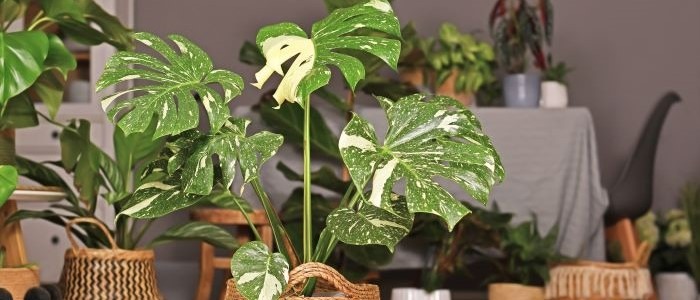When it comes to caring for a Dumb Cane Plant, (Dieffenbachia) light is one of the most important elements. It prefers bright, indirect light and should not be placed in direct sunlight. For optimal health, the plant should receive at least four hours of sunlight per day. If the leaves become too pale or yellow, this is an indication that more light is needed. When receiving enough light, the leaves of a Dumb Cane Plant will turn a deep, glossy green.
If natural sunlight isn’t available or adequate for your plant’s needs, you can use artificial lighting to supplement your indoor environment. To ensure proper development and growth, fluorescent bulbs should be used for 12 to 16 hours daily. Incandescent lights are also effective but need to be replaced every few months since they don’t last as long as fluorescent ones do.
It’s important to remember that too much direct sunlight can damage a Dumb Cane Plant’s leaves and cause them to burn or fade in color. To prevent this from happening, make sure you adjust the placement of your plant accordingly if its leaves are looking pale or yellowing from lack of light or if it’s placed in direct sun for too long during the day. To check whether the light levels are appropriate in your home, consider using an indoor plant monitor that measures both temperature and humidity levels as well as UV radiation levels so you can make sure your Dumb Cane Plant receives all that it needs!
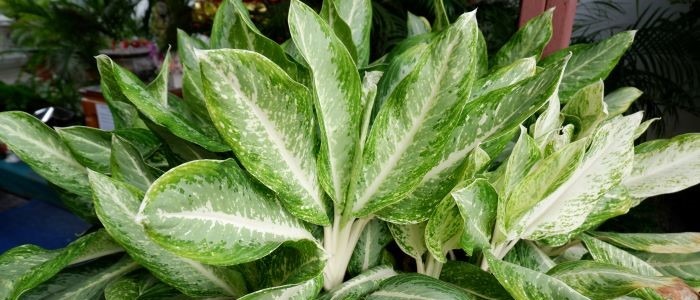
Dumb Cane Plant Frequently Asked Questions
Is Dumb cane a house plant?
Yes, Dumb cane is indeed a house plant. It is a popular choice amongst indoor gardeners due to its attractive foliage and ability to thrive in low-light conditions. Dumb cane, also known as Dieffenbachia, is known for its large, variegated leaves and can add a touch of tropical beauty to any home.
How often should I water my dumb cane plant?
The watering frequency for your dumb cane plant will depend on a few factors. Firstly, consider the environment it is in. If it is placed in a bright and warm spot, it may require more frequent watering. Secondly, check the moisture level of the soil by inserting your finger about an inch deep. If it feels dry, it's time to water it. Generally, watering once every 7-10 days should be sufficient, but always adjust based on the specific needs of your plant.
Light Requirements for the Dumb Cane Plant
When it comes to caring for a Dumb Cane Plant, light is one of the most important elements. It prefers bright, indirect light and should not be placed in direct sunlight. For optimal health, the plant should receive at least four hours of sunlight per day. If the leaves become too pale or yellow, this is an indication that more light is needed. When receiving enough light, the leaves of a Dumb Cane Plant will turn a deep, glossy green.
If natural sunlight isn’t available or adequate for your plant’s needs, you can use artificial lighting to supplement your indoor environment. To ensure proper development and growth, fluorescent bulbs should be used for 12 to 16 hours daily. Incandescent lights are also effective but need to be replaced every few months since they don’t last as long as fluorescent ones do.
It’s important to remember that too much direct sunlight can damage a Dumb Cane Plant’s leaves and cause them to burn or fade in color. To prevent this from happening, make sure you adjust the placement of your plant accordingly if its leaves are looking pale or yellowing from lack of light or if it’s placed in direct sun for too long during the day. To check whether the light levels are appropriate in your home, consider using an indoor plant monitor that measures both temperature and humidity levels as well as UV radiation levels so you can make sure your Dumb Cane Plant receives all that it needs!
Watering the Dumb Cane Plant
Caring for a Dumb Cane Plant requires proper hydration to maintain its health and longevity. Utilize lukewarm water and let the top layer of soil dry out before adding more; this will avoid overwatering which may lead to root rot or other plant diseases. The amount of H2O needed depends on the pot size and light exposure. Test the soil with your finger prior to watering again.
High humidity is also beneficial, so mist your Dumb Cane Plant or use a humidifier in dry climates. Furthermore, when repotting ensure there are drainage holes at the bottom of the pot to allow any extra liquid to escape; this can help prevent root rot over time.
Inspect for signs of pests or illness regularly; if you spot wilted leaves or discoloration take immediate action by using pest control methods or removing affected parts of the plant. Dieffenbachia’s care is not complicated if these steps are followed and will result in a beautiful, healthy houseplant!
Fertilizing the Dumb Cane Plant (Dieffenbachia)
Fertilizing a Dumb Cane Plant (Dieffenbachia) is an important part of keeping it healthy and happy. During the spring and summer months, it should be fertilized every two weeks with a balanced liquid fertilizer, applied at half-strength to avoid burning the leaves and roots. If using a slow-release fertilizer, it should be applied every six months. After fertilizing, the plant should be watered to help the nutrients penetrate the soil.
It is important to bear in mind that over-fertilization can cause more harm than good for the plant. To avoid this, always dilute the fertilizer to half strength and never use more than recommended on the label. Overdosing can lead to salt accumulation in the potting soil which can burn or kill your plant’s roots. It’s also important to use fresh fertilizer as old fertilizer may contain high levels of salts and other chemicals that can damage your plants.
Finally, inspect your Dumb Cane Plant regularly for signs of wilting or yellowing leaves which could indicate that you are not giving it enough nutrients or water or too much sunlight. With regular fertilization, your Dumb Cane Plant will stay healthy and vibrant all year round!
Dumb Cane Repotting and Propagation
Maintaining a healthy Dumb Cane Plant requires regular repotting and propagation. Every two to three years, you should transfer your plant into a slightly larger pot with well-draining soil. This will give the roots more space to grow and provide them with fresh nutrients. When selecting a new pot, make sure it has drainage holes and is just slightly bigger than the current one, as too much extra room can lead to rootbound plants.
Propagating this tropical beauty is easy, and can be done by taking 3-4 inch stem cuttings from the plant’s stems. Remove any lower leaves on the cutting before planting in moist soil mixture that’s kept in bright indirect light until new growth appears – this usually takes several weeks. During this time, ensure that the soil remains damp without becoming soggy or waterlogged. After successful rooting of the cuttings, transplant each one into its own individual pot with well-draining soil for optimal growth conditions!
With proper care and attention to repotting and propagation practices, you can enjoy a beautiful Dumb Cane Plant for many years to come! Regular repotting gives roots more space to grow while providing them with fresh nutrients, while propagating through stem cuttings creates new plants with minimal effort on your part. By following these steps carefully, you’ll have no trouble maintaining a thriving Dumb Cane Plant in your home!
Dumb Cane Common Problems and Troubleshooting Tips
Dumb Cane plants are generally easy to care for, but like any other houseplant, they can experience problems. Common issues with Dieffenbachia include yellowing leaves due to too much direct sunlight, brown-tipped leaves due to dry air or inconsistent watering, yellow spots caused by scale insects, root rot caused by over-watering, and droopy leaves due to lack of water.
When it comes to yellowing leaves from too much direct sunlight, adjusting the placement of the plant is key. Move the plant out of direct sunlight and into a bright spot with more indirect light. For brown-tipped leaves caused by dry air or inconsistent watering, misting the leaves or increasing humidity levels can help reduce stress on the plant. If there are yellow spots present on the leaves that were not there before and seem to be growing in size over time – this could be a sign of scale insects infesting your plant. To get rid of them, use insecticidal soap or neem oil diluted with water and spray onto affected areas.
Root rot is another common problem that arises when too much water is given to a Dumb Cane Plant. It is important to allow the top layer of soil to dry out completely between waterings and avoid overwatering as this can cause damage to its roots. You may need to transfer your Dumb Cane Plant into a new pot with well-draining soil if root rot has already taken hold in order for it to recover properly.
Lastly, droopy leaves can be caused by lack of water – make sure you’re giving your Dumb Cane Plant enough hydration using lukewarm water every few days and monitor moisture levels in the soil using an indoor plant monitor for optimal results. With proper care and attention paid towards these common problems – as well as regular fertilization – you will have a healthy and beautiful Dumb Cane Plant all year round!
Conclusion
In conclusion, the Dumb Cane Plant (Dieffenbachia) is an easy to care for houseplant with gorgeous foliage. It’s important to understand the light, water, and fertilizer requirements in order to keep it healthy. There are also troubleshooting tips available in case of any issues that arise. With proper care and attention, your Dumb Cane Plant can be a beautiful addition to your home for years to come.
When caring for your Dumb Cane Plant, it’s important to remember that a little goes a long way when it comes to light and water. Too much direct sunlight can cause damage to its leaves, while too much or too little water can lead to wilting or yellowing leaves. It’s also essential to fertilize the plant every two weeks with a balanced liquid fertilizer diluted at half-strength. Additionally, repotting and propagation should be done every few years and signs of pests or illness should be monitored regularly.
By following these tips and taking care of your Dumb Cane Plant properly, you’ll have a thriving houseplant that will bring life into your home for many years!
Other Spotted House Plants
